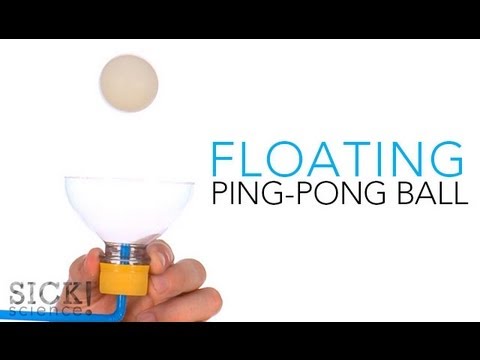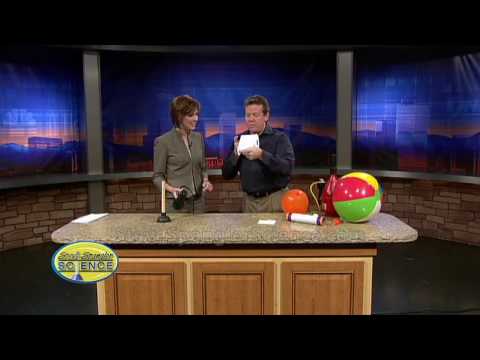Ping Pong Pressure – Sick Science! #151
We have all experienced wind and, like it or hate it, it affects us. Moving air can jostle your hair about, fly a kit, or, in extreme cases, tear entire buildings from their foundation. Did you know that this moving air actually creates low pressure, though? It’s true. On an exceptionally windy day, you can even see tall buildings bowing towards each other near their tops! We’re going to recreate this phenomenon using ping pong balls in the Ping Pong Pressure experiment. – See more at: http://www.stevespanglerscience.com/lab/experiments/ping-pong-pressure#sthash.HINuLOio.dpuf
Want more experiments like this? Check out http://www.stevespanglerscience.com/product/naked-eggs-and-flying-potatoes
Sick Science™ is a trademark of Steve Spangler, inc.
© 2013 Steve Spangler Science all rights reserved





Magic… Definitly magic…
It's the Coanda effect.
Bernoulli's principle.
the balls are attracted to each other…
I don't get it.
WRONGGGG!! it was ninja pandas pushing them together while the hair dryer was on
Cuz air moves down and around them pushing them inward. Duh!
Two possibilities the moving air causes an area of low pressure or the air moves around th3 pingpong balls
Is this 8 grade stuff
The air is hugung
The fast moving air between the ping pong balls creates a low pressure area. The (relatively) higher pressure air on the outside of the ping pong balls push them together. This is similar to how an airplane wing creates lift
The hot air make the ping pong balls hot for each other, that's why it won't work if you blew cold air in between them duh
What are the safety glasses for? Just in case someone bends over and pokes out an eye with a clear straw that is sticking up.
Because a ball like this is designet to spin when it hits air and hence making ping pong unpredictable, so when air hits it its actually trying to spin and it usually spins the same way air is hitting, thats why